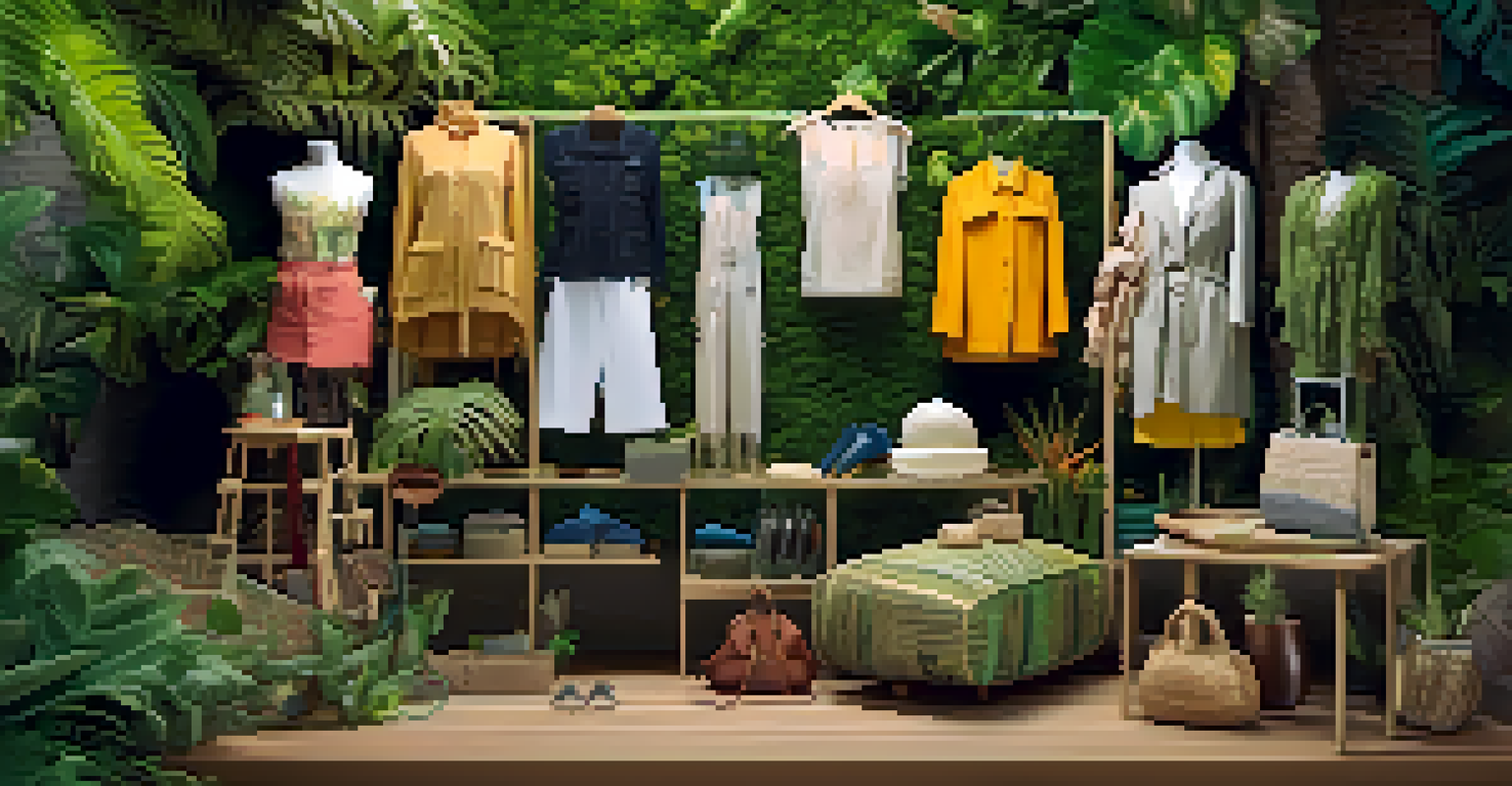Fast Fashion vs. DIY Culture: A Sustainable Fashion Debate

Understanding Fast Fashion: The Quick Turnaround Trend
Fast fashion is a term used to describe the rapid production of inexpensive clothing, designed to meet the latest trends. Brands like Zara and H&M exemplify this model by getting runway styles into stores in a matter of weeks. While this approach offers consumers affordable options, it often comes at a steep environmental cost.
Fashion is the armor to survive the reality of everyday life.
The environmental impact of fast fashion includes massive waste, high water consumption, and pollution from manufacturing processes. For instance, it’s estimated that the fashion industry is responsible for about 10% of annual global carbon emissions. This alarming statistic raises questions about the sustainability of our shopping habits.
Moreover, fast fashion promotes a throwaway culture, encouraging consumers to buy more than they need, often leading to discarded clothing. This cycle not only affects the planet but also undermines the quality and craftsmanship that fashion can embody.
The Rise of DIY Culture: Crafting a Sustainable Future
DIY, or 'do-it-yourself' culture, emphasizes creativity and personalization in fashion. Rather than purchasing mass-produced items, individuals create their own clothes or upcycle existing pieces. This movement fosters a deeper connection to the items we wear, making each piece unique and meaningful.

One of the appealing aspects of DIY culture is its potential for sustainability. By repurposing old clothes or using environmentally friendly materials, DIY enthusiasts help reduce waste and lessen their carbon footprint. For example, turning an old pair of jeans into a trendy bag keeps materials out of landfills.
Fast Fashion's Environmental Toll
The fast fashion industry significantly contributes to pollution and waste, raising concerns about its sustainability.
Additionally, DIY encourages skills development, such as sewing or crafting, which can be empowering. Many find joy in creating something from scratch, and this sense of accomplishment often leads to a more mindful approach to fashion consumption.
The Environmental Impact: A Tale of Two Approaches
When comparing fast fashion to DIY culture, the environmental implications are stark. Fast fashion contributes significantly to pollution and waste, while DIY practices prioritize sustainability through recycling and creative reuse. The contrast between these two approaches highlights the urgent need for more eco-conscious choices in the fashion industry.
Sustainability is no longer about doing less harm. It's about doing more good.
For instance, a single cotton t-shirt typically requires over 2,700 liters of water to produce, whereas a DIY project might utilize scraps or second-hand items, drastically reducing resource consumption. This shift towards more sustainable practices can make a substantial difference in our ecological footprint.
Ultimately, embracing DIY culture can be a powerful way to combat the negative effects of fast fashion. By choosing to create and recycle, consumers can take an active role in fostering a healthier planet.
Consumer Choices: Navigating the Fashion Landscape
As consumers, we have the power to influence the fashion industry through our choices. Opting for sustainable brands, supporting local artisans, or diving into DIY projects are all ways to make a positive impact. Each decision contributes to a larger movement towards ethical fashion and environmental responsibility.
However, shifting away from fast fashion isn't always easy. Many are drawn to the convenience and affordability of trendy pieces, often overlooking the long-term consequences. Awareness and education about the effects of our consumption can help guide smarter choices that align with sustainable values.
DIY Culture Promotes Sustainability
Engaging in DIY projects encourages creativity and reduces waste, fostering a more sustainable approach to fashion.
Engaging with the fashion community through social media, workshops, or local events can also promote sustainable practices. By sharing knowledge and resources, we can collectively move towards a more responsible fashion culture.
The Cost of Fast Fashion: Price vs. Value
Fast fashion often lures shoppers with low prices, but what is the true cost? While a cheap dress may seem like a bargain, it can hide significant environmental and ethical implications. Understanding the difference between price and value is crucial in making informed choices.
Value encompasses quality, durability, and the impact of our purchases on the planet. Investing in a well-made, sustainable piece may have a higher upfront cost but can save money in the long run by reducing the need for frequent replacements. This shift in mindset encourages consumers to think critically about their fashion investments.
Moreover, many DIY projects can be cost-effective, allowing for creativity without breaking the bank. By focusing on value rather than price, we can support a fashion ecosystem that prioritizes sustainability and integrity.
Fashion’s Future: Collaborating for Sustainability
The future of fashion lies in collaboration between fast fashion brands and the DIY community. By integrating sustainable practices and supporting local artisans, mainstream brands can evolve towards more eco-friendly operations. This partnership could pave the way for a fashion industry that respects both creativity and the environment.
Some brands are already taking steps to implement sustainable practices, such as using recycled materials or adopting fair labor standards. These initiatives demonstrate that it is possible to balance affordability with ethical responsibility, creating a win-win scenario for consumers and the planet.
Consumer Choices Shape Fashion's Future
By choosing sustainable brands and embracing DIY, consumers can influence the fashion industry towards more ethical practices.
Ultimately, the dialogue between fast fashion and DIY culture can inspire innovation and change. The more we discuss and advocate for sustainable practices, the more likely we are to see a shift in the industry as a whole.
Empowering Change: Your Role in the Fashion Debate
You may be wondering how you can contribute to this ongoing debate. The answer lies in your choices as a consumer. Every time you decide to support sustainable brands, participate in DIY projects, or advocate for ethical practices, you play a role in shaping the future of fashion.
Moreover, spreading awareness about the impacts of fast fashion and the benefits of DIY can inspire others to make more conscious decisions. Sharing your DIY projects on social media or discussing sustainable brands with friends can create a ripple effect, encouraging a community focused on positive change.

Remember, small actions can lead to significant impact. By embracing your creativity and championing sustainability, you can help steer the fashion landscape towards a more responsible and ethical future.